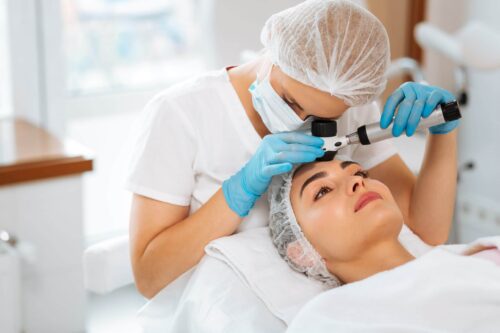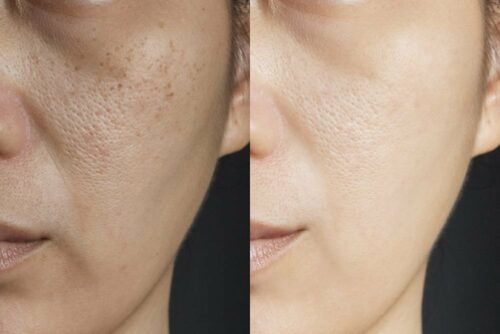Yes, chemical peels are used to get rid of tan and help in rapid exfoliation and regeneration of skin cells by removing the tanned skin layers. For instance, you can treat acne by applying a chemical face peel.
But what is chemical treatment, and how does removing tan work? Keep reading to learn everything about a chemical peel.
What is chemical peel treatment?
The chemical peel treatment is a rejuvenating skin procedure that exfoliates the skin\’s upper layers in a controlled manner using mild acids derived from natural sources of varying strengths.
A chemical peel removes layers of skin using a chemical solution and reveals the more youthful skin underneath. Furthermore, it can reduce or improve fine lines, wrinkles, acne, scars, uneven skin colouring, and other imperfections.
What is the chemical peel treatment procedure?
In this treatment, the chemical solution which causes trauma to your skin\’s layers is applied to your skin. The skin layers eventually peel off, revealing more youthful skin. Your new skin will be smoother with fewer lines and wrinkles, a more even colour, and a brighter complexion.
It is an outpatient procedure taking less than an hour at skin clinics. The procedure begins with pre-procedure basics, and then the actual treatment is done, followed by post-procedural precautions.
Pre-procedure: Preparation for your chemical peel
Here are some general instructions to keep in mind before beginning with the chemical peel treatment procedure:
- Before commencing the treatment, sharing your medical history and health conditions during the initial consultation with your dermatologists is crucial.
- Avoid tanning and direct sun exposure at least two weeks before each treatment.
- Avoid using products having retinoids (for example, tretinoin) for a minimum of two weeks before the treatment.
- If you have been prescribed oral antibiotics, start taking them at least 24 hours before your chemical peel.
Procedure:
Your skin is completely cleansed with an agent removing excess oils while protecting your eyes and hair. You may also receive general anaesthesia depending on your chemical face peel type.
A chemical solution will be applied to your skin during the chemical peel – you may feel a little warm due to the hot sensation that may last up to a few minutes. Then it is followed by a stinging sensation, and a cool compress may be applied to your skin to relieve it. And in the end, the chemical is washed off.
There are three types of chemical peels:
- Superficial peels: these peels use mild acids like alpha-hydroxy acid to exfoliate gently and only penetrate the outermost layer of the skin
- Medium peels: these peels use acids such as glycolic acid to reach deeper layers to more effectively remove the damaged skin cells
- Deep peels: these peels often use phenol and completely penetrate the middle layer of the skin and remove damaged skin cells.
Chemical peel: before and after tan removal
Here are before and after images of the chemical peel treatment:
What are the chemical peel side effects?
Common side effects like redness, dryness, stinging or burning, or a slight burning are temporary, and with a deep chemical peel, you may permanently lose the ability to tan.
Chemical peels also have dangerous side effects that can stay permanently with you. These includes:
- Scarring: it can be permanent.
- Darkening or lightening of the skin colour: it can happen more often in people with darker skin
- Heart, liver, or kidney damage: The phenol used in deep peels can damage the heart muscle, liver and kidneys. It may also cause irregular heartbeats.
- Infections: very rarely, fungal or bacterial infections are caused by chemical peels.
Alternate methods for tan removal treatment
Here are some alternative face tan removal treatments:
- Laser Toning: it is one of the best treatments to get rid of tan. It involves using a laser device to break down the pigment and reduce tan, sun spots, etc.
- Microdermabrasion: it is also an exfoliating treatment that is effective in tan removal and dead skin cells.
- Tan removal creams: one can get various tan removal creams and bleaches from the market. Sadly, these creams provide only a short-time solution as they may only treat the surface layers and do not penetrate and treat the deeper layers.
- Home remedies: Home remedies with natural ingredients may provide temporary relief, but their efficacy is not scientifically proven.


